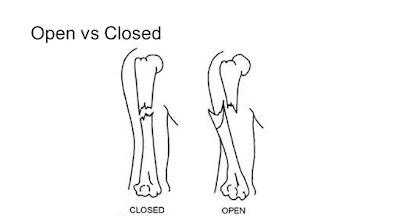

42.5% (n=17) were treated with open reduction and IM fixation of either the radius (11.8%, n= 2) or both bones (88.2%, n= 15). The mean age at injury was 10.83 (☓.02) years.

Of these, 28 were male, and 12 were female. RESULTS 40 patients with operatively treated BBFFs were identified. We compared those treated with closed reduction to those treated with open reduction. Closed reduction was first attempted in all patients who underwent open reduction. Patient demographics, injury mechanism, and surgery-related data were collected. METHODS We analyzed data of all patients who presented to a Level I pediatric trauma center with radiographically confirmed diaphyseal BBFFs treated with intramedullary (IM) fixation between 20. The purpose of our study was to identify factors associated with the need to perform an open reduction during operative treatment of BBFFs. Little data exist to help surgeons predict which BBFFs will require open reduction. Previously reported rates of open reduction in operatively managed BBFFs range from 8% to 72%. Both bone forearm fractures (BBFFs) can usually be treated non-operatively but may require hardware implantation with or without open reduction. Learn more about how Fox Valley Orthopedics can help you by dialing (630) 584-1400 to book an appointment with one of our board-certified orthopedic surgeons.OBJECTIVE Forearm fractures are a common pediatric injury. ORIF is done by making an incision above the site of the fracture, so your orthopedic surgery can access the broken parts directly. ORIF may be an emergency procedure, or it can be done after swelling subsides, scheduling surgery about a week or so from the date of the injury, so your doctor can ensure the bones are set correctly. “Open reduction/internal fixation” (ORIF) is the term for surgical treatment aimed at realigning a broken bone using screws, plates, pins, or rods. Your orthopedic surgeon will only recommend surgery if the possible benefits outweigh the risks and if it is the best way to ensure your bones grow in proper alignment. It’s important to know that closed fracture reduction is not always feasible or successful, and you may still require surgery to repair the broken bone. Not all fractures can be fixed with a closed reduction, especially if they are unstable, open, or if the risk-to-benefit ratio is unfavorable as determined by the orthopedic surgeon. Once your bone is set, your doctor will take another X-ray to make sure the bone is in the correct position before covering it with a cast or splint to protect it while it heals. Your doctor will move the broken bone pieces back into the proper position so it can heal properly. The procedure is usually done shortly after the bone is broken in an outpatient procedure.īefore the closed reduction starts, you will be given anesthesia to block pain, and you may be awake or asleep, depending on what you and your doctor determine is best.

A closed reduction is a nonoperative treatment in which your orthopedic surgeon manipulates bone pieces back into their correct position and alignment. Your orthopedic surgeon will examine you and take X-rays to determine whether a closed reduction is the best treatment option for you. How Closed Fracture Reduction Is Performed Patients who are the best candidates for closed reductions typically only have a single breakage point in the fracture, which is determined with an X-ray. The bones are simply reset before covering the injury with a cast or splint. While some fractures are complex and require surgery to place plates, pins, or screws, so the bone(s) can heal properly, other fractures can be reset without surgery, using a closed reduction method that is done without making any incisions in the skin. You want to ease the pain and get back to your everyday life as soon as possible. Breaking a bone is a traumatic injury and makes daily living more difficult.


 0 kommentar(er)
0 kommentar(er)
